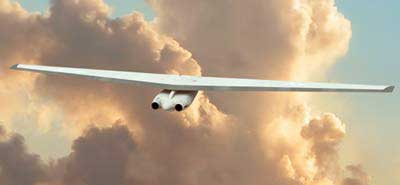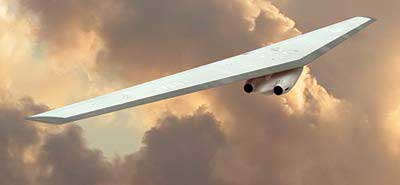The U.S. military has long desired an aircraft capable of loitering outside enemy territory and, when necessary, diving towards targets at speeds greater than the speed of sound. However, the paradox is that if the aircraft excels at low speeds, it may not be effective when reaching supersonic speeds.
The answer is now clear: it is the Switchblade, a concept for a morphing aircraft currently being developed by Northrop Grumman.
 |
| Switchblade with horizontal wings before reaching supersonic speed. It can maintain this speed for at least 15 hours. (Photo: LiveScience) |
When it is introduced (targeted for 2020), it will fly with a wingspan of 60 meters perpendicular to an engine similar to that of conventional aircraft. However, just before surpassing the sound barrier, its wings will rotate approximately 60 degrees so that one wingtip points forward while the other points backward. This angled shape will redistribute shock waves forward of the aircraft when it reaches supersonic speeds, causing drag.
 |
| Its wings rotate forward at a 60-degree angle after surpassing the sound barrier to dive towards the target. (Photo: LiveScience) |
When the Switchblade returns to subsonic speeds, its wings will revert to their normal position.
DARPA, a research unit of the Pentagon, allocated $10.3 million to Northrop Grumman to develop a detailed plan in November 2007. A test prototype is expected to emerge about four years later.
This is not the first attempt to create a variable-sweep wing aircraft. The inventor of SpaceShipOne, Burt Rutan, designed a rotating-wing aircraft for NASA in 1979. However, that wing caused the aircraft to operate very awkwardly; when the pilot pulled the nose up, the aircraft tilted to one side.
The Switchblade is a strong candidate to become a type of unmanned aerial vehicle. Its control software can manage delicate flight maneuvers.
If all goes well, a prototype with a wingspan of 12 meters could be ready by 2010, and a fully-sized Switchblade will be available by 2020.
T. An


















































